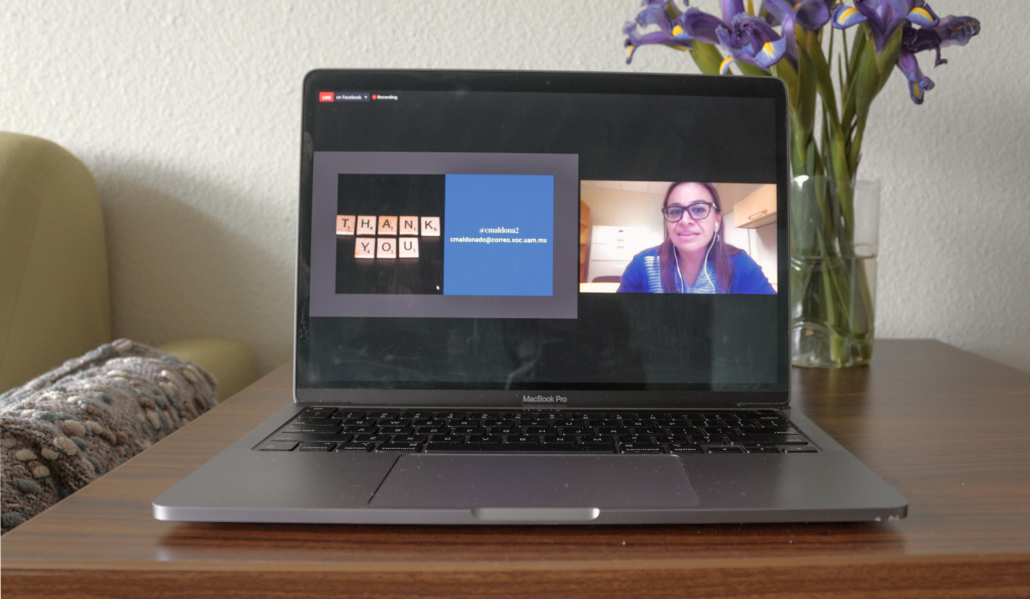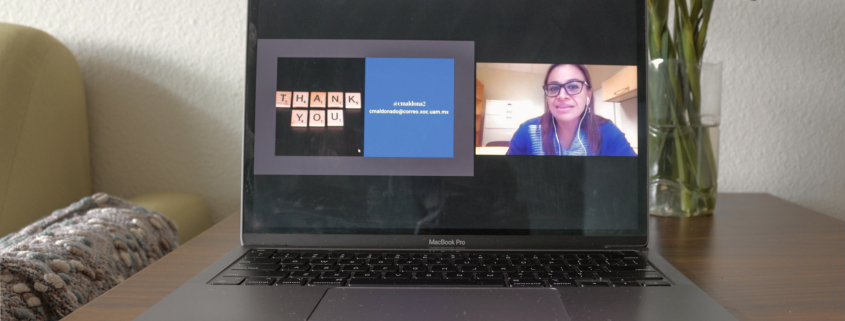Price hosts webinar on poverty in Mexico

True or false: Mexico is among the 20 largest economies in the world.
True or false: Mexico is a lower-middle income country.
Claudia Maldonado, a Fulbright-García Robles visiting professor from the Autonomous Metropolitan University in Mexico, posed the following questions to attendees of her webinar “Understanding and Combating Poverty in Mexico – Examining How a Rich Economy Coexists With Working-Class Poverty,” gauging their knowledge of the Latin American country’s economic rank and status.
Although Mexico appears as an image of macroeconomic success — with 13 free trade agreements spanning 50 countries, an upper-middle income status, a nominal GDP rank of 15 globally and a growing service sector — prosperity-projecting statistics contrast the lived realities of the more than 52 million Mexicans who currently live in poverty, Moldonado said.
“[There might be] a distorted perception of the development level in Mexico,” said Maldonado in an interview with the Daily Trojan. “Mexico, strictly speaking, is not a poor country, in comparative terms. Although, if you look at social development indicators, poverty rates, malnutrition, some of these numbers are compatible with much poorer nations than Mexico.”
In the webinar hosted by the Sol Price School of Public Policy and moderated by the Price Latinx Student Association Wednesday, Maldonado spoke to an audience of over 80 attendees on Mexico’s social policy history and the inequality the country’s people continue to face. Maldonado, the founding director of the Center for Learning on Evaluation and Results Latin America and the Caribbean, served as a council member at the National Council for the evaluation of social development policy since 2020. In the webinar, Maldonado, an advocate for rights- and evidence-based social policy, dissected the social, political and economic conditions, such as the country’s profit and collusion-motivated government and a lack of effective social spending, that maintain Latin America as one of the most unequal regions in the world.
The webinar was prefaced with a quote from German geographer Alexander von Humboldt, who, two centuries ago, wrote, “Mexico is the land of inequality. Perhaps nowhere is there one more appalling in the distribution of fortunes.”
Maldonado said von Humboldt’s statement remains true today as Mexico continues to experience social injustice and persistent and increasing gaps between indigineous and non-indigineous citizens, rural and urban areas, genders and ages. She said this inequality hinders development and security, and acts to enable and promote political polarization and violent crime.
“It is not a coincidence that Latin America is the most unequal region in the world and is also one of the most violent regions in the world, measured by homicide rates, which is a very hard indicator of the level of violence,” Maldonado said.
The pro-market liberal structural reforms the majority of Latin America, including Mexico, underwent since the 1980s led to Mexico growing into an open economy that seeks to profit from globalization. Despite the market growth, the process of democratization in Mexico — where the Institutional Revolutionary Party held a stronghold since the early 20th century — has not fulfilled its promises, according to Maldonado.
In theory, democratization lends itself to more “pro-poor policies” if the majority of the voter pool is low-income. However, Maldonado said a more corporatist public policy that favors enterprises that receive their power from the government actualized in Mexico following the surge of globalization and market growth. The country’s policy system, captured by business and state elites and political brokers, functions to exchange economic benefit for political loyalty, Maldonado said.
“Some of the expected changes in social policy, as a result of democratization, have not actually taken place,” Maldonado said. “We create an environment in which the economy is leaving a lot of people behind but also social policy is unable to smooth these shocks to the benefit of the poorest in Mexico.”
Toward the end of the webinar, Maldonado said she believes that, despite the shortcomings of past reforms, there remains a possibility to channel the movement of democratization into social policy revisions that prioritize those who need it most.
“There are a lot of windows of opportunity, especially after democratization, to actually make social policy truthful to the constitutional mandate of social rights in Mexico and deliver for the majority of the Mexican poor,” she said.
To make use of social policy reform as a tool to lift citizens out of poverty and mend the multitude of societal gaps in present-day Mexico, Maldonado suggested utilizing policy as a platform for progressive transfers for redistribution, which can provide people a “first chance with equal opportunity.” She also said policy makers should use it to promote basic endowments such as health and education, and to help those in poverty socially and economically advance by providing a safety net of social protection against negative shocks.
“Social policy is well targeted and genuinely progressive. It can provide public goods and services, paying special attention to those who are more vulnerable and who are more dependent on public provisions,” Maldonado said.
As someone who comes from a Mexican, low-income background, the webinar’s moderator, MJ Lopez, found the webinar relevant and relatable to her own experience. Lopez said Maldonado’s topic is critical to public policy considerations because it emphasized using social policy to lift people out of poverty.
“The topic was really great and [it was great] seeing … the historical context of social and economic inequality and how we can learn and try to apply it to our public policy and social policies so that we can help more people, be more equitable and to just be able to live a decent life and be able to prosper,” said Lopez, a masters of public administration candidate who serves as professional development co-chair of the Price Latinx Student Association.
The webinar was the vision of Maldonado herself, said Katie Maloney, the special events program coordinator at the Price School.
“It was really based upon a lot of the research that she dedicated her life to conducting, and so she reached out with this idea and then, as the event manager at the Price School, I thought it’d be a fantastic opportunity to engage our student group because they don’t always get the chance,” said Maloney, who operated the behind-the-scenes of the event.
Maloney said the volume of questions from the audience, of which only a third were answered during the webinar because of time constraints, demonstrated the high level of interest in the topic Maldonado presented.
“Dr. Maldonado was doing a really fantastic job with her presentation and making a difficult concept, which is public policy in Mexico, … very comprehensive and attainable for people to understand,” Maloney said.
According to Maldonado, the purpose of the webinar was to share her research in a way that sparks interest in public policy, especially south of the border. She said she hopes her presentation brought attention to how economically connected the United States and Mexico are, as well as the complexity of the social policy matrix.
“[I hope that attendees] have an understanding of how [the U.S. and Mexico’s] economic and regional interdependence suggests that we should have much more cooperation in terms of social protection,” Maldonado said. “Many of the global threats are not national or regional. They are like systemic shocks that will affect the livelihoods of people, regardless of the level of development of the country they live in.”

